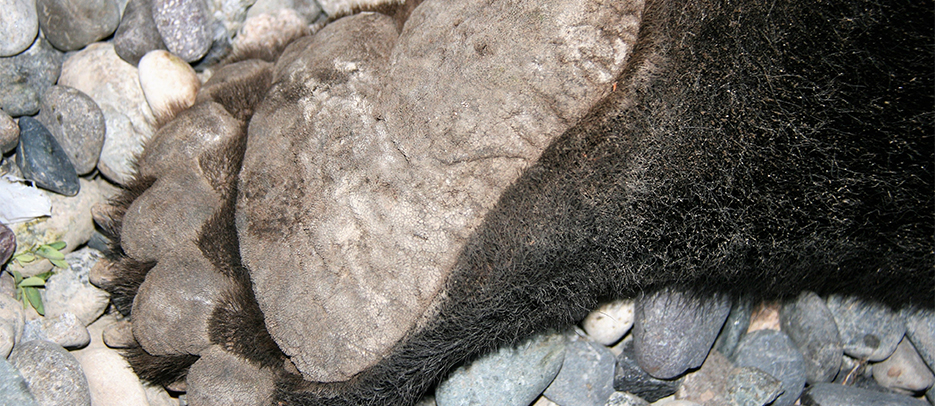Grizzly Bear
The Squamish-Lillooet grizzly bear population is bordered on the east by the Squamish and Cheakamus Rivers and the Sea-to-Sky Highway. Sitting astride the southern end of the Coast Range, the Squamish-Lillooet grizzly bears have survived primarily in the headwaters of more remote valleys where the habitat is more secure. These include the Ryan River and the undeveloped headwaters of Callaghan Creek, the Soo, Elaho, Ashlu and Tzoonie River. source: https://www.coasttocascades.org/populations/
The Upper Squamish Valley is home to approximately 59 grizzly bears (Ursus arctos) and occasionally, grizzly bears will wander into Squamish as they follow food sources such as salmon. While encounters with grizzly bears are uncommon, it is important to know the difference between a black bear and grizzly bear and how to prevent encounters. Click on the image to view the WildSafeBC Grizzly Bear brochure. For additional information on grizzly bears: http://www.env.gov.bc.ca/soe/indicators/plants-and-animals/grizzly-bears.html
Difference between Black Bear and Grizzly Bear:
Source: westernwildlife.org
Avoiding Encounters at Home
Bears are attracted into our neighbourhoods because of available non-natural food like garbage and fruit. We can reduce the potential for human-bear conflict by simply managing attractants. Our neighbourhoods must be porous to wildlife activity. This means ensuring that wildlife can move through our community without being attracted to non-natural food. We don't want to invite wildlife to stop and stay.
Bears are opportunistic omnivores and will return time and time again to a readily available food source. However, if the attractant is secured or removed, the bear will move on.
- Always use both locks to secure residential garbage & organic totes at all times.
- Place totes curbside between the hours of 5 a.m. and 7 p.m. only on collection day and never the night before (as per the Wildlife Attractant Bylaw No. 2053).
- Reduce odours by freezing smelly food waste in a paper bag and dispose of the bag on collection day.
- Rinse out all recycling material to eliminate food residue & reduce odours.
- Don’t use birdfeeders during bear season (March to December) or hang feeders at least 10 feet off the ground and at least 10 feet away from trees or climbable structures. Ensure seeds are not collecting underneath the feeder by using a catch tray.
- Pick fruit as it ripens and don’t let it collect on the ground.
- Ensure chicken coops & beehives are surrounded by a well maintained electric fence.
- Maintain an odourless compost by liming, turning frequently, cutting food into small pieces, layering greens with browns and never add meat, fish, fats or oils. Always cover food with lawn clippings and browns.
- Consider an indoor worm composter.
- Feed pets indoors and keep all bowls indoors.
- Keep barbeques clean and grease free by burning an extra 5 minutes after removing food and remove or clean barbecue tools.
- Move fridges and freezers indoors or lock them.
- Talk to your neighbours about managing their attractants.
Keeping bees and chickens may increase the chances of attracting grizzly bears. Please take a moment to review the requirements for backyard hens and bees.
For information and how to stay safe: http://westernwildlife.org/grizzly-bear-outreach-project/bear-safety


